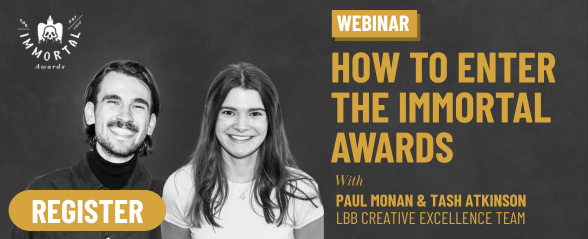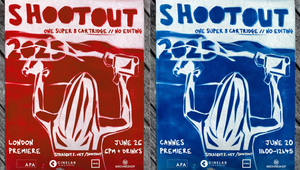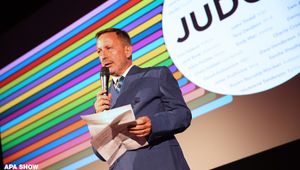
TFOA 2025: AMV BBDO Breaks Down Guinness’ Brand Trajectory

Few brands can claim the legacy and cultural resonance of Guinness. Founded in Dublin in 1759, the iconic stout has long been a staple of pubs, a symbol of craftsmanship, and a brand synonymous with some of the most memorable advertising in history. But even legends start somewhere.
At this year’s The Future of Advertising event, strategy partner Joe Smith and Nadja Lossgott, joint chief creative officer at AMV BBDO, walked audiences through Guinness’ remarkable transformation over the years – one that saw it grow into the top-selling beer in the UK, while redefining its brand for a more diverse, younger audience.
A Legacy of Distinction and Challenge
Guinness’ advertising history is as rich as its famous stout and its advertising is among the first references given to ad school students. This portfolio however, wasn’t always nearly as robust. In fact, Joe kicked off the talk explaining that “for the first 170 years of the brand's life, they didn't advertise at all.”
That changed in 1929 when Rupert Guinness, then chairman of the board, set a high bar: “You can advertise, but only if the quality of the advertising matches the quality of the beer.” This is the principle that went on to fuel hundreds of campaigns, from ‘Good Things Come to Those Who Wait’ to ‘Made of More’.
By 2020, however, cracks in the stout’s branding had begun to show. Despite its storied success, Guinness faced key challenges. “There were lots of people that loved drinking Guinness, but for non-drinkers, it could feel quite intimidating and masculine, quite austere, quite serious – like a meal in a pint,” Joe explained.
Seasonal fluctuations were another issue: “Guinness does really well in winter… but it dips in the summer. One focus group respondent described it as ‘a pint for two old men talking about their divorces in the corner of an old pub.’ That comment stayed with me for five years.”
On top of that, changing media habits meant younger target groups weren’t engaging with Guinness in the same way. Then, of course, came the covid-19 pandemic – a disaster for a brand whose home is the pub. “When you’ve advertised a perfect pint in a pub for 100 years, and covid-19 shuts the pubs down, you are screwed,” Nadja remarked.
Rewriting the Story
At this point, evolution was as crucial for Guinness’ survival as the iconic name had been. The strategy came down to three key objectives, explain Joe and Nadja:
- Open up the brand to more occasions and audiences;
- Make Guinness less intimidating and more inviting;
- Justify its price premium by doubling down on its distinctiveness.
This transformation wasn’t only about surface-level messaging – it was about rethinking how Guinness presented itself to the world.
“The brand had become really, really dark,” Nadja said. “We took a lot of decisions in how we art direct and shoot things to move it to a literally brighter, more collective, and more inviting world.”
This led to changing the core of the filming process around the product. “We literally took Guinness off its pedestal,” she explained. “We always used to shoot it from the bottom up, looking up at it like the heroic pint it is. So, we started shooting it with a drinker’s eye view – so you could feel like you were grabbing that Guinness from the pub.”
The Power of Cultural Reframing
One of the most fascinating aspects of Guinness’ evolution was how the brand responded to cultural shifts – particularly the rise of Shit London Guinness, a viral social media account that posted images of poorly poured pints. “You can imagine the panic,” Nadja recalled. But a quick reframing can show you that Shit London Guinness was actually a love letter to the brand.” Instead of fighting it, Guinness embraced it, turning what initially looked like a band nightmare into an opportunity for engagement.
Another strategic shift was Guinness’ approach to non-alcoholic beer. While competitors positioned non-alcoholic options as an uninspiring choice – something you only choose to drink if you’re pregnant or the designated driver – Guinness saw things differently. “No one was looking at the category as an open opportunity for more joy,” Nadja said. Guinness Zero was introduced not just as the more boring alternative, but as an experience worth celebrating.
“We did a bunch of activations to introduce Zero to the world – we took over pubs and added an extra ‘0’ to the front of them,” she added. The feat portrayed Guinness’ dedication toits zero-alcohol addition, and its potential.
Expanding Beyond Rugby, and Beyond Winter
Guinness has long been linked to rugby, but as the brand evolved, it needed to go bigger. “The Six Nations was a huge sponsorship success,” Nadja noted, “but Guinness has started to expand into its first, biggest global partnership with the Premier League.”
Crucially, the brand didn’t let football overshadow its identity. Unlike many other football sponsors relying on celebrity names and huge production, the stout knew how to keep its core values intact while engaging with football fans authentically.
“Guinness does football in a Guinness way,” Nadja emphasised. “No celebrity in sight.” Instead, the brand focused on its distinct visual storytelling – ensuring it remained the hero, rather than being eclipsed by the sport itself.
Guinness also tackled the perception that it was only a winter drink. “One of the things we did was create a summer campaign so you can feel that it is an effervescent, beautiful, blue-sky type of drink,” Nadja said. The shift worked – consumer perceptions of Guinness as a summer drink started to rise.
The numbers speak for themselves. “On-trade and off-trade sales have increased 30% and 45%,” Joe revealed. “Guinness has become the biggest beer in GB for the first time, overtaking Carling.”
More importantly, Guinness has changed its image. “We’ve started changing perceptions of who and when Guinness is for,” continued Joe. “18 to 24-year-old penetration has been increasing over the last five years, and distinctiveness has been growing.”
The Guinness case study offers powerful takeaways for brands looking to stay relevant while honouring their heritage. Thinking big and long-term: “This is a brand that backs itself and does things on a big scale,” as Joe put it.
Leverage brand distinctiveness, because, as Nadja noted, “Visuals are extremely important in such a disparate media world.” And lastly, embrace change, even when it’s daunting: “Going beyond rugby, going beyond ‘old men’ – it has been very successful indeed.”
And, like always in adland, collaboration is key. Guinness’ success wasn’t just an AMV BBDO effort – it was a collective push from agencies, production teams, and partners across the board. For a brand that has lasted over 260 years, the lesson is clear: the best way to stay iconic is to never stand still.













